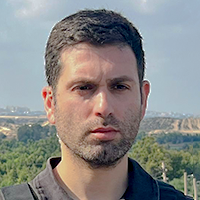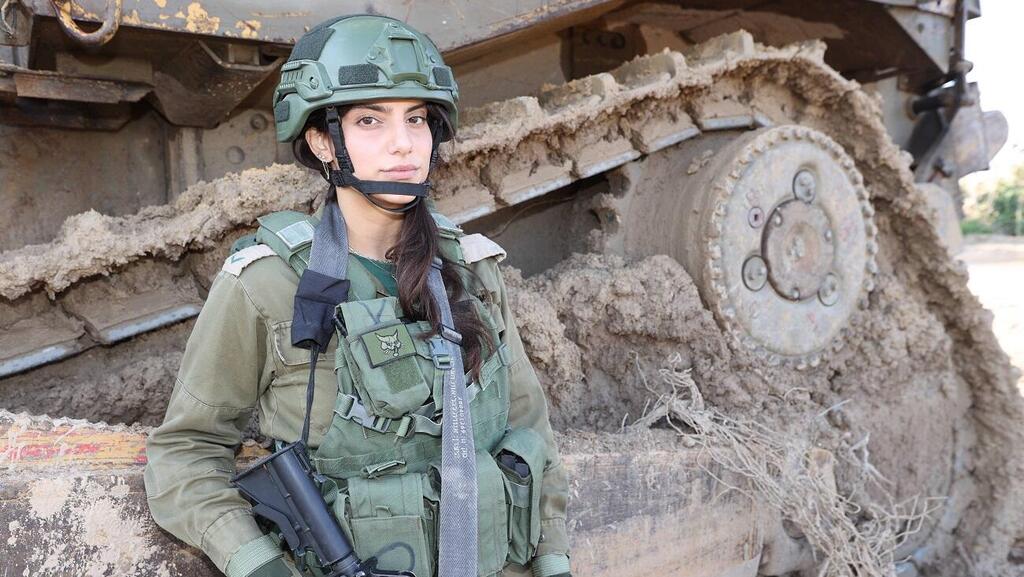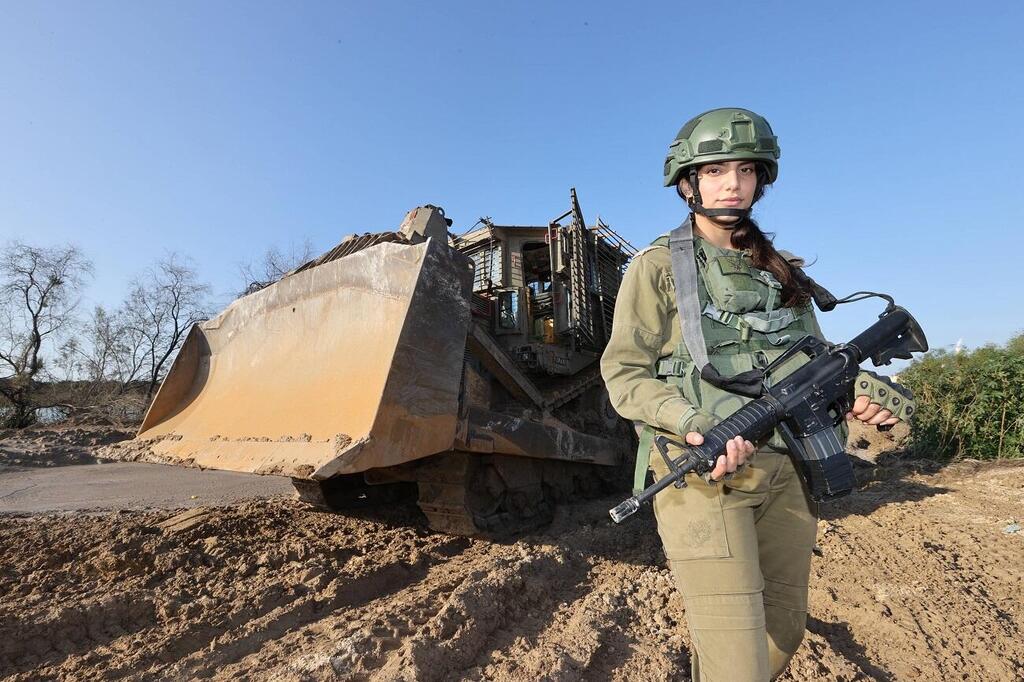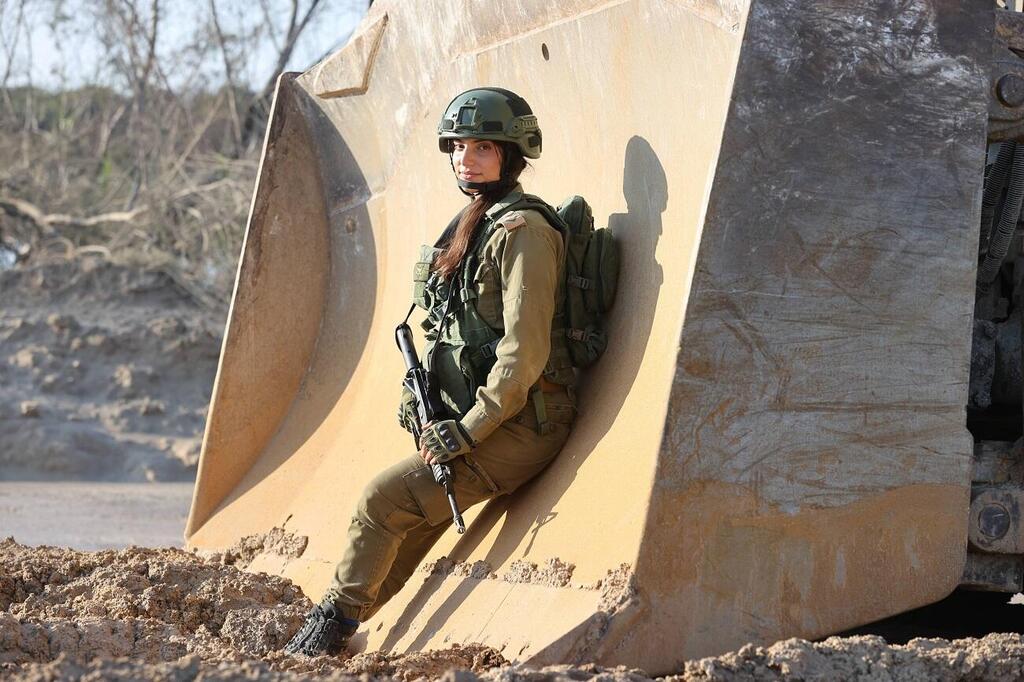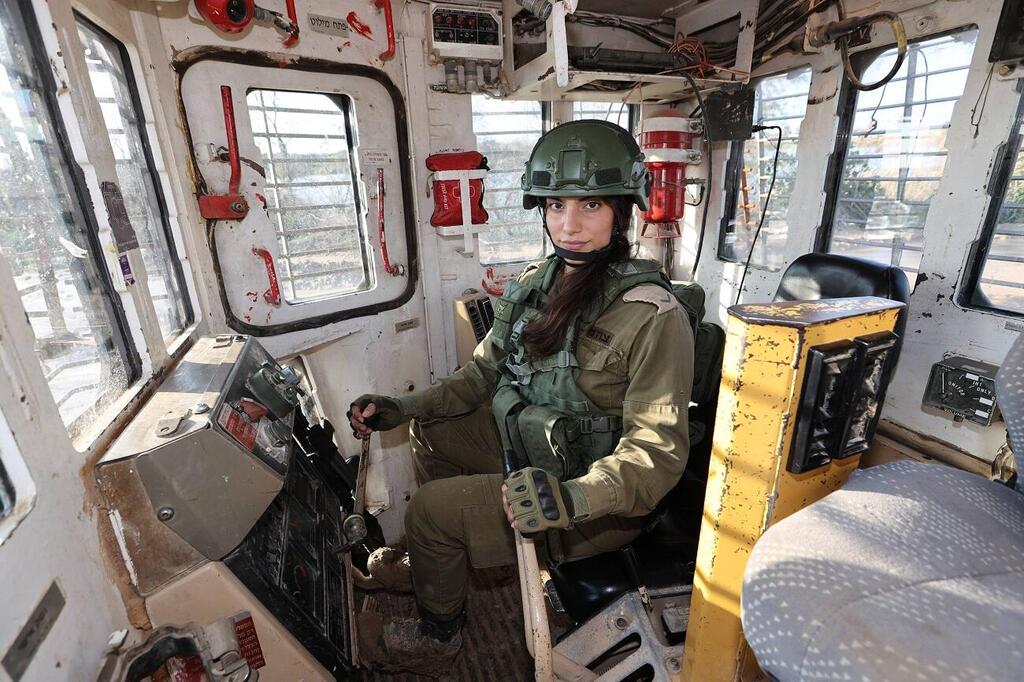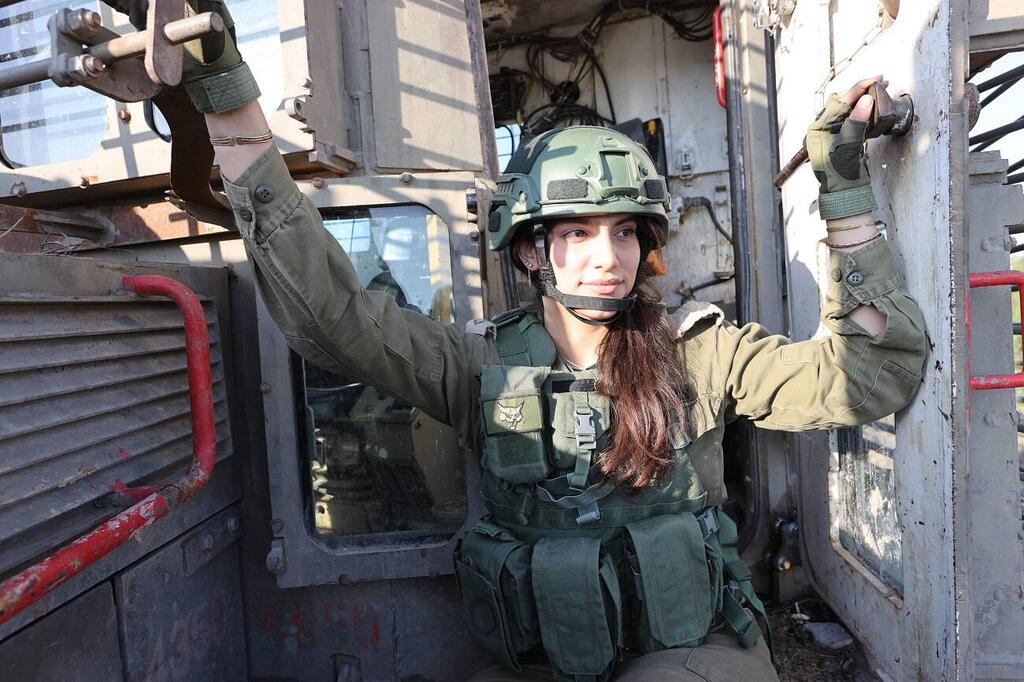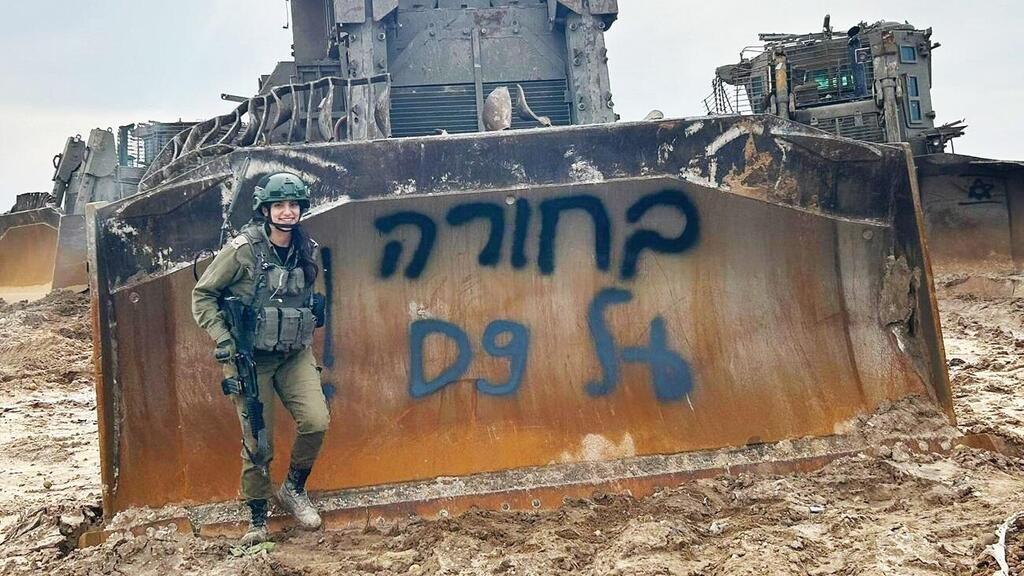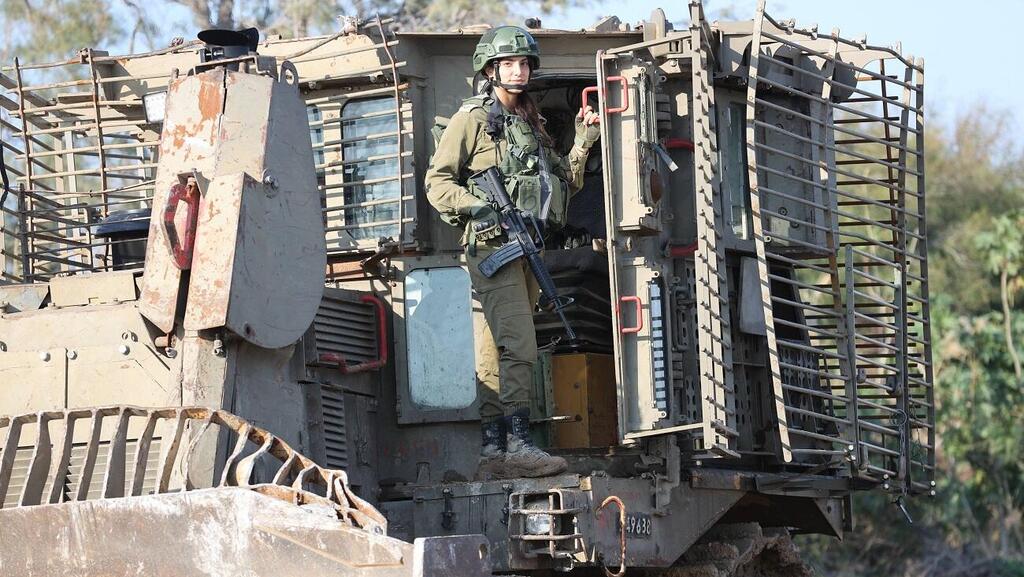On Tuesday, May 19, 2016, almost two years after Operation Protective Edge, the “Dan” scout’s lodge held its annual Memorial Day commemoration for Israel's Fallen Soldiers and Victims of Hostile Acts. Scouts’ alumni serving in the IDF took to the stage, told war stories, and talked about their fallen friends and about what they do in the military.
More stories:
A 16-year-old Girl Scout leader was in the audience. Her name was Sharon Perry. As a die-hard Maccabi Tel Aviv basketball fan, however, her friends called her “Sharras” in tribute to the Lithuanian player who played for the team at the time. She was studying Theater and Biology at the Ironi Hey High School at the time and her draft was a long way off. But she listened attentively to all the soldiers.
Then, one soldier changed her life. She may not have known it at the time, but he set a snowball rolling that would also change the history of the IDF. His name is Daniel and he was serving in the Combat Engineering Corps’ elite Yahalom unit. On stage, he excitedly regaled tales of detonating explosive devices, exposing terror tunnels and underground warfare.
The event also hosted soldiers from Sayeret (IDF’s special reconnaissance unit), and soldiers serving in a variety of top-secret tech positions as well as soldiers from assorted highly respected units and divisions. But something touched her about Daniel’s story about the tunnels, blowing things up and heavy equipment dripping with hydraulic grease.
Sharon approached Daniel at the end of the evening and asked him to tell her more, and more, and more still. Daniel shared as much as he could, but had to get back to base for operational activity. “Hang on, what about girls in the unit?” Sharon asked. “There aren’t any” he answered. “But we have female instructors in the unit. Maybe you should look into it sometime.” He wished her well and was off.
“At that very moment, I knew that’s what I wanted” Sharon recalls. “I wanted to serve in a combat position in the engineering corps. I wanted the most combat, and most meaningful position they had, even if it wasn’t open to girls. ”I knew nothing would stop me. I began dreaming about being the IDF’s first female combat soldier in the engineering corps.”
It was a long and hard struggle. But on January 3, 2024, Sharon Perry broke through the glass (or in this case concrete) ceiling: She rolled into the heart of Khirbet Khuzaa, a hostile Palestinian area in the southern Gaza Strip, as an Engineering Vehicles Operator (EVO) on a Caterpillar D9. She’s the first woman in the IDF’s history to go into Gaza on a D9 – the vehicle that has proven its place as a pillar of the war in Gaza. “For me, it’s just the first door to open along the journey – and there’s a long way to go.”
'I only wanted the Engineering Corps'
Historically, the “King of the Battle” has been the field artillery. In the current war, however, the crown has been transferred to the Combat Engineering Corps. The demand for EVOs for D9s, wheel loader bulldozers, and further heavy mechanical engineering equipment is so great that their salaries are due to increase by more than one-third in the coming months.
This is coupled with a double-digit percentage increase in recruits in the upcoming drafts. The Combat Engineering Corps has almost doubled since Operation Protective Edge. During the course of the war, in an extraordinary equipment acquisition operation, the IDF has purchased dozens of various military tractors and has already ordered further machines from the United States - mainly D9s, partly at the expense of American aid that’s usually reserved for armaments and aerial vehicles.
The IDF’s critical need for heavy mechanical engineering equipment became apparent at the beginning of the ground operation: The IDF decided to make its incursion through the northern part of the Gaza Strip in the innovative way of moving its forces through Gazan houses by smashing and demolishing them with D9s rather than taking regular routes through residential areas.
This method, which avoids blowing up explosives planted along the streets and intersections, surprised Hamas and more importantly, saves IDF lives. “The D9 is the most versatile tool on the battlefield. It’s used not only for exposing tunnels and discovering shafts, but also for uncovering areas of explosive devices, demolishing booby-trapped houses and buildings used by terrorists, breaking through routes, and establishing defense positions for our forces in enemy territory” explains a senior IDF officer.
“All the engineering battalions, especially the reservists, have been operating continuously since the start of the war. Enormous demand has meant that we’ve assigned reservist engineering battalions to regular brigades such as the parachutists. This is unique to the IDF. In foreign armies, engineering battalions constitute their own divisions.”
But a few years back, when Sharon applied, it was all a long way off and her path to the D9 was strewn with obstacles. “I just couldn’t get it out of my head,” she tells us. “I read articles about it. I met up with soldiers and it just looked so crazy.”
The army had quite different plans for Sharon: The skinny girl from North Tel Aviv’s selection test results were very high indeed and the IDF tends to enroll such recruits in tech or intelligence units. This was the path the IDF had planned for her, complete with all the perks: This type of service usually comes with rather comfortable conditions and acquiring professional experience that’s worth a fortune in high-tech.
“Unlike women serving in the tanks who need to lift heavy mortars, Tzama fighters don’t require any special physical strength.”
This is a far cry from the tough grey berets, the long and arduous training course and serving as an instructor at a base in the south of the country, which… how shall we put it? Isn’t the most luxurious of IDF’s bases. “I’d made up my mind” she explains.
“I only wanted the Engineering Corps, and specifically Mechanical Engineering Equipment (known in the IDF as “Tzama”, the acronym for Tziyud Mechani Handasi). I sent the army no end of letters and e-mails telling them that I wanted a combat position, specifically in the Engineering Corps – despite the fact that there are no women in the Combat Engineering Corps.”
The IDF eventually gave in. One morning, on her way to her 12th-grade classes, in the middle of the street, Sharon yelled out “I got the SMS I’ve been waiting for. I’ve been assigned to the Tzama instructors’ course.’’ She was overjoyed.
As expected, the course was extremely tough and Sharon found herself there with only one further female soldier who didn’t make it through to the end of the course. On completion of the course, most of the soldiers were assigned positions as Tzama instructors in units such as the Home Guard and the IAF, but “Sharras” asked to be assigned a position as an instructor in the Engineering Corp’s Tzama unit.
She learned how to operate - and was issued licenses for - all types of military tractors, including the D9 monster, affectionally known in the IDF as the “Doobi.” Then came the moment that threatened to shatter all her dreams.
If there’s one figure who had the greatest impact on Sharon, it’s her grandfather, the late Leon Hasdai, who had always been there for her as a child. “Toward the end of the instructors’ course, I got a call from home” she recalls.
“They told me that my 87-year-old grandfather was in the hospital and it wasn’t looking good. At the most critical part of the training, I left to be with him in his last moments and say goodbye. From his sickbed, he saw me for the first time in my uniform with the Combat Engineering Corps grey beret. That’s the last thing he saw. “
Did you have a chance to talk?
"He raised his hand and saluted me. He whispered in my ear ‘I’m proud of you’. From that moment, I promised myself that I’d do everything for him, for myself, to be the very best. I truly was my grandfather’s granddaughter.
"When I returned to base after the funeral, I went straight into the field to make up the parts of the course I’d missed. I found myself looking at a D9 full of mud. I started cleaning it - partly with water and partly with my own tears. But parting from my grandfather elevated me and gave me the strength to carry on.”
When the course ended, Sharon went for an interview with the section head, a tough, seasoned officer. “He told me that he didn’t know me, but that he’d heard I was a ‘star’. It all carried on from there. I specialized in the D9, as well as the wheel loader, bulldozers, and smaller engineering machinery. It was clear to me that I would become an officer, and I was sent to officer’s training.”
Sharon also stood out during officers' training. She received her officers’ pin but, yet again, something went wrong at the final stage. “Toward the end, I was hospitalized for ten days for a throat infection. I refused to give up, so I did that section of the course after I recovered” she recalls.
“In the meantime, COVID-19 kicked off and they froze any further officer’s positions for instructors.” Sharon now faced a dilemma: She could either give up on becoming an officer just before qualifying and return to as a Tzama instructor, or she could finish the officers’ training course and give up, once and for all, on her dream of fighting in combat in the Tzama division.
That’s a tough decision
“I didn’t care about the ranks. I just wanted to stay on the D9. So, I went back as an instructor at the engineer training school. Responses were positive, including from the field. I was charged with new recruits, including some from very difficult backgrounds.
"They told me that, unlike their NCOs, I knew how to set boundaries for them and that they appreciated me. I stood out there too. I’d be stopped in the field as people couldn’t believe it. I’m still in contact with some of the guys who were my rookies. At the end of each course, I’d send them off fully trained for their battalions. I was proud of them, but there was still something eating me away.”
Why?
“I didn’t just want to tell them what to do., I also wanted to do it myself.”
'Just tell me where to report and I’ll be there'
Sharon wanted to stay on as a career soldier, but during the Covid pandemic, the IDF cut back on positions and she was discharged. “I was released from the IDF with mixed feelings. My dream of a military career hadn’t been fulfilled. After my discharge, my friends from the course kept calling me asking when I’d be coming back. Sadly, that didn’t happen.”
She returned to mentoring young people, working for a year at a private Tel Aviv high school. She also enrolled for a BA in Government and Democracy.
On October 7, she was at home and didn’t even hear the first sirens. “My brother’s in Yahalom. His phone, obviously, kept ringing. They told me to wake him up. By the time we turned on the TV, he was in uniform and on his way to fight in the Gaza Envelope.
I couldn’t stay at home as if nothing had happened. There was a war going on outside. I remembered that the army had removed me from the reserves. So, I started calling the guys I’d served with. In the meantime, I got myself to Ichilov Hospital where I waited in line for six hours to donate blood. I just felt I had to do something.
I gradually realized that lots of my good friends wouldn’t make it back from the Nova festival. I also like going to festivals. Over the holidays, we’d been out partying all the time, but I didn’t go with them to the Nova Music Festival near Re’im.”
"I was so focused on the mission that when we crossed the fence into Gazan territory at first light, I didn’t feel anything at all. I took a selfie in the D9 cockpit and sent it to my friends from my regular service with a WhatsApp message reading ‘I’ve gone in to make history.'"
She was eventually recruited, but as an operations sergeant in an operations room in the south of the country. Sharon treated it as an opening. “I was a soldier again, this time in the reserves, still not giving up on the dream I had as a teenager in the scouts.”
Between shifts in the operations room, Sharon was constantly calling almost everyone with whom she had served – officers, combat soldiers, former rookies, instructors - asking them all to be assigned to one of the engineering companies, either reserves or regular.
“Just let me instruct them, anything,” she pleaded. She eventually got hold of a phone number for an engineering battalion commander in a brigade assigned to reserve duty in the north of the country. He said he’d heard a lot about me and that I should come to the assembly area as an instructor to refamiliarize the soldiers with the equipment.
"I quickly made my way north and, with great excitement, started training them. But there in the north, I didn’t have the chance to actually fight. In the meantime, the IDF started preparing for the ground incursion into Gaza.”
When the training in the north came to an end, there was still no one hearing Sharon’s request to join the fighting, and she was released from service.
“I, once again, found myself sitting at home in civilian clothing, feeling down, watching the forces on TV fighting in Gaza, and I wasn’t part of this big and important thing. Then, out of nowhere, I got a call from Captain Or who had been my platoon commander at the beginning of my service.
"He told me that he was now a company commander in a reserve duty Tzama company operating under the Gaza Division and they needed someone to come and sort things out there as they were reshaping the border. I replied: ‘Just tell me where to report and I’ll be there’.”
The task Sharon was assigned wasn’t the most attractive, but she completed in with great pride: Engineering arrangement of ground batteries in the forces’ assembly points in the Gaza Envelope. There, too, she was the only woman. “There were lots of raised eyebrows in the company, but I refused to give up.”
Then came the chance for the real thing. The company commanders informed her that the company was about to be assigned its first operative mission inside Gazan territory. “I said. I’d do it. No concessions. The most important thing was that the company should be successful in its mission.”
And your desire to go into Gaza?
“It was still burning. I went to Company Commander Or and stated the facts: I could be a regular commander and fighter here. It took him a moment to process. I told him that change like this could push the system years forward as there had never been a female EVO in the IDF. Or was in. We now just needed the green light from above.”
While waiting for the long-awaited authorization, she traveled across the desolate Gaza Envelope communities with their improvised memorial monuments in memory of those who fell in the October 7 massacre. “I saw the memorial they built in memory of Mapal Adam who I’d travelled with in South America and who was murdered at the Nova festival. I couldn’t take it anymore” she tells us.
Then, one evening in early January, the authorization arrived.
‘I’ve gone in to make history'
The mission assigned to “Sharras” was going into Khirbet Khuzaa in the Khan Younis area, exposing terrorists’ homes and demolishing them. At this stage, all the brigade and battalion commanders were begging for more D9s and wheel loaders.
Shortages at the time meant they were distributed sparingly. With no pilot programs that go on forever and no office work, no all too familiar IDF bureaucracy and talk show discussions, the engineering corps simply gave extraordinary, first of its kind, approval for Master Sergeant “Sharras” to join the next team to enter the fighting zone in Gaza.
“We got organized and prepared and I went in with the D9 at 4 a.m. alongside Company Commander Or. I was the first in the battalion together with Deputy Company Commander (Res) Lior and Amnon a veteran 50-year-old senior master sergeant, both of whom had volunteered for reserve duty.”
“I found myself the only female soldier among 70 male reservists. Combat engineering requires experience, so I fought alongside much older reservists, some over 40. But being among them seemed natural to me.”
Was it a stressful situation? The whole area was full of terrorists
"I was so focused on the mission that when we crossed the fence into Gazan territory at first light, I didn’t feel anything at all. I took a selfie in the D9 cockpit and sent it to my friends from my regular service with a WhatsApp message reading ‘I’ve gone in to make history’. They were excited. It seemed natural to me, but I’ll never forget the morning of January 3, 2024.”
She operated the “Doobi” for hours on end, with gunfire and explosions all around. She only left the cockpit around midday to take cover from an explosion conducted by her friends. I then noticed in front of me dozens of soldiers who suddenly realized there was a woman, fighting like them, in Gazan territory.”
How did it feel?
“There were raised eyebrows, but I proved myself.”
She continued operating the D9 throughout the day. At around 4 p.m., following a lengthy mission of exposing a tunnel system beneath apparently innocuous farming greenhouses, she suddenly heard a huge explosion in the distance.
“Terrorists had fired an RPG at Lior and Amnon’s D9. We immediately reported ‘Green in the eyes’, meaning we were okay and then the rescue battle ensued. The guys with him were injured by shrapnel and quickly evacuated. It could have been me on that D9. That morning, we’d split up. They went left and Or and I went right. It all happened 1500 feet from us.”
Company Commander Or was moderately to severely injured from shrapnel that’s still embedded in his body and he’s recovering in the hospital. Or feels he owes his life to Sharon. “The missile went straight into the cockpit and exploded in a split second and everything was filled with smoke. Dozens of pieces of shrapnel entered my body and I could hardly see anything.
"My radio fell down and I couldn’t report anything, but I quickly locked the cockpit so the terrorists wouldn’t be able to abduct us from the vehicle and take us into the tunnel. Amnon’s face was full of blood, but I managed to guide him in reverse for 100 feet to the infantry forces to evacuate us on stretchers and onto helicopters. We reservists don’t train regularly and the training Sharon gave us on the border before we went in simply saved my life. I just can’t describe how capable she is, even under fire."
Sharon, what did you think when you heard about the hit?
"I quickly went out to retrieve the D9 that had been hit by the missile. I got into the cockpit of the “Doobi” that had been hit. I saw it was burnt and perforated and had their personal equipment. I tidied up what I could, and under the cover of darkness, we extracted the damaged D9 into Israeli territory.”
Is this when you realized that the dream might also be dangerous?
“That’s when it clicked. At about midnight, when I crossed back across the border into Israel, I understood the risks I’d taken upon myself.”
And?
“I didn’t regret it for a moment."
A breakthrough
She’s now in Or’s Command and Control Room and intermittently goes into Gaza. With the current campaign’s enormous demand for EVOs, including female EVOs, the engineering corps has changed its tune. The pilot program for female fighters that Yahalom initiated before the war will be expanded from the 12 female soldiers recruited last year to include a higher number by this March’s draft.
The army isn’t ruling out recruiting, for the first time, female Tzama combat fighters as part of standard procedure to go into battle zones - on a path broken in by Sharon Perry’s D9. “Unlike women serving in the tanks who need to lift heavy mortars, Tzama fighters don’t require any special physical strength” Sharon explains.
“The D9 Caterpillar doesn’t open up (requiring physical strength to change). You do need to pack equipment into the vehicles and lift the chains for towing but, with practice, girls like me can do it. It’s not unattainable. Before I went into Gaza, some people had their doubts, saying they were afraid for me and ‘what would happen if…’ But in the end, when we got out, they were cheering for me. I was happy to prove what I’d wanted for so many years. One Saturday, one war, completely turned around the lives of entire country. My life too.”
How has your life changed?
“Nowhere else on Earth would they understand how this service forges you, strengthens you, turning you into a so much better version of yourself.”



